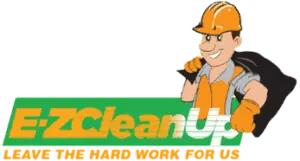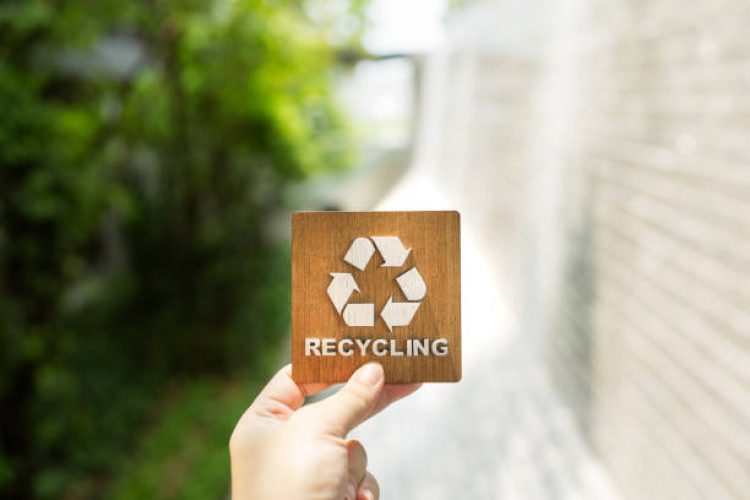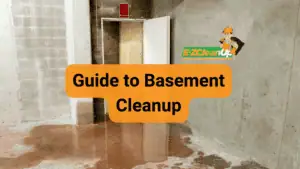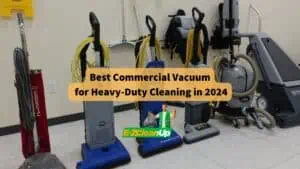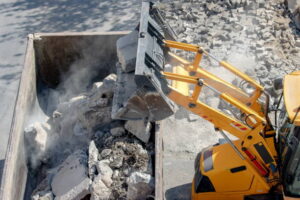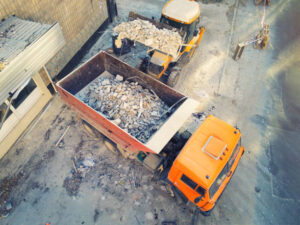Understanding and properly managing hazardous waste exclusions is critical for businesses that generate potentially hazardous materials. EPA concluded that these materials should not be regulated as solid or hazardous wastes for a number of reasons, but this doesn’t mean they can be handled carelessly. This guide will help you navigate the complexities of hazardous waste exclusions while maintaining the highest safety standards.
What Are Hazardous Waste Exclusions?
Some of the materials that would otherwise fit the definitions of a solid or hazardous waste under waste identification are specifically excluded from the definitions. These exclusions exist under the Resource Conservation and Recovery Act (RCRA) to provide flexibility in waste management while still protecting human health and the environment.
These materials are excluded for a variety of reasons, including public policy, economic impacts, regulation by other laws, lack of data, or impracticability of regulating the waste. However, exclusion from hazardous waste regulations doesn’t eliminate the need for careful handling and management.
Types of Hazardous Waste Exclusions
Solid Waste Exclusions
Wastes that are excluded from the definition of solid waste are not subject to RCRA subtitle C hazardous waste regulation. These include materials that are recycled in specific ways, such as being used as ingredients in industrial processes or returned to the original production process.
Hazardous Waste Exclusions
If a material meets an exclusion from the definition of hazardous waste, it is not regulated as a hazardous waste, even if the material technically meets a listing or exhibits a characteristic that would normally meet this definition. Common examples include:
- Household hazardous waste – Generated by individuals at residential properties
- Universal wastes – Batteries, pesticides, mercury-containing equipment, and lamps
- Solvent-contaminated wipes – When managed under specific conditions
- Used oil – When managed for recycling under special regulations
- Spent lead-acid batteries – When sent for reclamation
Safe Handling Procedures for Excluded Materials
1. Proper Characterization and Documentation
Even though materials may be excluded, you must still properly identify and characterize them. 40 CFR section 262.11 describes the process a person must follow to determine if the solid waste they generated, as defined at 40 CFR section 261.2, is a hazardous waste.
Best Practices:
- Maintain detailed records of waste generation and management
- Document the basis for claiming an exclusion
- Keep records for at least three years
- Conduct periodic reviews of your exclusion determinations
2. Container Management
Never store hazardous products in food containers; keep them in their original containers and never remove labels. For excluded materials:
- Use appropriate, compatible containers
- Ensure containers are in good condition without leaks or corrosion
- Label containers clearly with contents and hazard information
- Store containers in designated areas away from incompatible materials
3. Storage Requirements
When practical, drums and containers shall be inspected and their integrity shall be assured prior to being moved. Follow these guidelines:
- Conduct regular inspections of storage areas
- Maintain adequate aisle space for inspections and emergency response
- Implement spill containment measures
- Control access to storage areas
- Protect containers from weather and temperature extremes
4. Employee Training
Train workers on: potential exposure hazards at the site, decontamination procedures, how to minimize exposure, how to use engineering controls and PPE, medical surveillance procedures, and response procedures for emergencies.
Training should cover:
- Specific properties of the excluded materials being handled
- Proper handling and storage procedures
- Emergency response procedures
- Personal protective equipment (PPE) requirements
- Spill response and cleanup procedures
5. Personal Protective Equipment (PPE)
Always use appropriate PPE when handling excluded hazardous materials:
- Chemical-resistant gloves
- Safety glasses or goggles
- Protective clothing or aprons
- Respiratory protection when necessary
- Steel-toed boots in storage and handling areas
Special Handling Considerations
Conditional Exclusions
Some materials are conditionally excluded, meaning they must meet specific management requirements. This rule revises the definition of solid waste to conditionally exclude solvent-contaminated wipes that are cleaned and reused and revises the definition of hazardous waste to conditionally exclude disposable solvent-contaminated wipes.
For conditional exclusions:
- Strictly adhere to all specified conditions
- Understand that violation of any condition revokes the exclusion
- Implement systems to ensure ongoing compliance
- Document compliance with all conditions
State Regulations
State regulatory requirements for generators may be more stringent than those in the federal program. Be sure to check your state’s policies. Always verify local requirements, as states may:
- Have additional exclusions or more restrictive rules
- Require notifications or permits not required federally
- Impose stricter storage or handling requirements
- Mandate specific reporting or recordkeeping
Emergency Preparedness and Response
Even with excluded materials, maintain emergency preparedness:
- Develop an Emergency Response Plan – Include procedures for spills, releases, fires, and other emergencies
- Maintain Emergency Equipment – Keep spill kits, fire extinguishers, and personal protective equipment readily accessible
- Establish Communication Protocols – Ensure employees know how to report emergencies and contact emergency responders
- Conduct Regular Drills – Practice emergency response procedures periodically
Where major spills may occur, a spill containment program, which is part of the employer’s safety and health program required in paragraph (b) of this section, shall be implemented to contain and isolate the entire volume of the hazardous substance being transferred.
Transportation and Disposal
Transportation Requirements
Even when materials are excluded from hazardous waste regulations:
- Follow Department of Transportation (DOT) requirements for hazardous materials
- Use appropriate shipping containers and labels
- Provide proper shipping documentation
- Select qualified transporters
Disposal Options
Check with your local environmental, health or solid waste agency for more information on HHW management options in your area. If your community doesn’t have a year-round collection system for HHW, see if there are any designated days in your area for collecting HHW at a central location to ensure safe management and disposal.
Compliance Best Practices
Regular Audits and Inspections
- Conduct internal audits of waste management practices
- Review exclusion determinations annually
- Inspect storage areas and containers regularly
- Document all inspections and corrective actions
Recordkeeping
Maintain comprehensive records including:
- Waste characterization data
- Basis for exclusion determinations
- Training records for all employees
- Inspection reports
- Incident reports and corrective actions
- Manifests and shipping documents (when required)
Continuous Improvement
- Stay informed about regulatory changes
- Review and update procedures regularly
- Learn from incidents and near-misses
- Implement new technologies and best practices
Common Mistakes to Avoid
- Assuming exclusion means no regulation – Many excluded materials still have management requirements
- Failing to document exclusion basis – Proper documentation is essential for compliance
- Ignoring state and local requirements – Federal exclusions may not apply at state level
- Mixing excluded and non-excluded wastes – This can eliminate the exclusion
- Inadequate training – All personnel must understand proper handling procedures
- Poor container management – Corroding containers, however, require special handling. Call your local hazardous materials official or fire department for instructions
When to Seek Professional Assistance
Consider consulting with environmental professionals when:
- You’re uncertain about whether an exclusion applies
- Your facility generates multiple waste streams
- You’re facing regulatory enforcement action
- You need to develop or update waste management procedures
- You’re implementing new processes that may generate excluded materials
Conclusion
Handling hazardous waste exclusions safely requires a thorough understanding of applicable regulations, diligent management practices, and a commitment to protecting human health and the environment. Promoting reuse and recovery is certainly one of the goals of RCRA; however, this goal does not take precedence over ensuring the proper management of hazardous waste.
By following the guidelines outlined in this article, maintaining proper documentation, training employees effectively, and implementing robust safety procedures, you can confidently manage excluded hazardous materials while minimizing risks to your workers, your facility, and the environment.
Remember that compliance is an ongoing process. Stay informed about regulatory changes, maintain open communication with regulatory agencies, and continuously improve your waste management practices to ensure the safest possible handling of all materials, excluded or otherwise.
References
- EPA – Criteria for Definition of Solid Waste and Hazardous Waste Exclusions: https://www.epa.gov/hw/criteria-definition-solid-waste-and-solid-and-hazardous-waste-exclusions
- EPA – Learn the Basics of Hazardous Waste: https://www.epa.gov/hw/learn-basics-hazardous-waste
- OSHA – Hazardous Waste Operations and Emergency Response Standard (29 CFR 1910.120): https://www.osha.gov/laws-regs/regulations/standardnumber/1910/1910.120
- EPA – Regulatory Exclusions and Alternative Standards for Recycling: https://www.epa.gov/hw/regulatory-exclusions-and-alternative-standards-recycling-materials-solid-wastes-and-hazardous
- EPA – Steps in Complying with Regulations for Hazardous Waste: https://www.epa.gov/hwgenerators/steps-complying-regulations-hazardous-waste
Disclaimer: This article provides general guidance on handling hazardous waste exclusions. Always consult with qualified environmental professionals and regulatory agencies for specific guidance applicable to your facility and operations.
